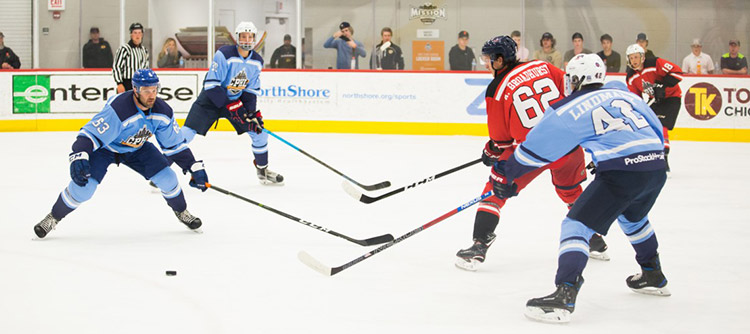How Tall Should A Hockey Stick Be?
Posted by Adam Rosenbaum on 10 24 2018

It’s important to know the proper hockey stick length. Playing with an improperly sized stick can slow players’ development, make their shooting less accurate and powerful, and even throw off their skating.
How Long Is a Hockey Stick?
That’s a question with many answers. The proper hockey stick length varies depending on the size, strength and playing characteristics of the player, but there are some guidelines for determining hockey stick height:
Another way to measure a hockey stick: Hold the stick with your arm straight down by your side and your top hand holding the stick where it would normally be – again, while wearing skates. If the blade of the stick is flat against the ground, the stick is the proper length. If the toe is up, the stick is too long. If the heel is off the ground, the stick is too short.

If a stick is slightly too long, holding it with your arm straight down so that the blade is flat will leave the excess length extending beyond your top hand. That excess is the amount of handle that should be cut away.
Size = Style
In the broad strokes, the answer to the question, “How long should a hockey stick be?” is another question: What kind of player are you?
The Dangler: Players who specialize in stickhandling tend to prefer shorter sticks. Why? Shorter sticks, because of both weight and length, are easier to maneuver quickly and they allow you to carry the puck closer to your body.

Mr. Everything: Picture the center who’s going to take a lot of faceoffs, get in the corners to dig for pucks, be a presence in front of the net, make the occasional poke check and rip off a slapshot now and then. An average-length stick balances the ability to stick-handle with the needs for power and to disrupt an opponent.
The Defender: Blue-liners typically have the longest sticks on the team. A longer reach makes it easier to poke a puck away from an attacker, to reach to intercept a pass and to put more power behind a slapshot.
Realize that these are generalities. Many players find that they prefer sticks that seem at odds with the style or position they play. Consider the above guidelines to be starting points, but experimentation is encouraged!
Don’t Do This!
Some common mistakes when obtaining hockey sticks:
It’s OK to trim an inch or two from a stick. That shouldn’t present too much of an issue in terms of altering stick flex. Also, it isn’t uncommon to put a wooden plug into the end of stick that may have become too short for a growing player, thus extending its useful life.
Have any ideas for the blog? Topics you would like to see covered? Contact us and let us know!
